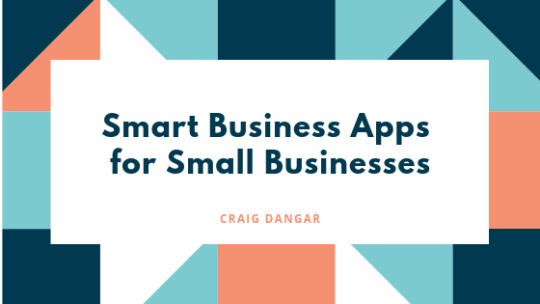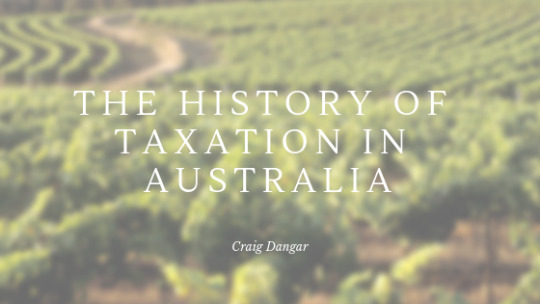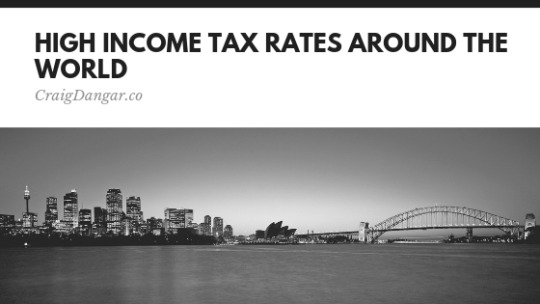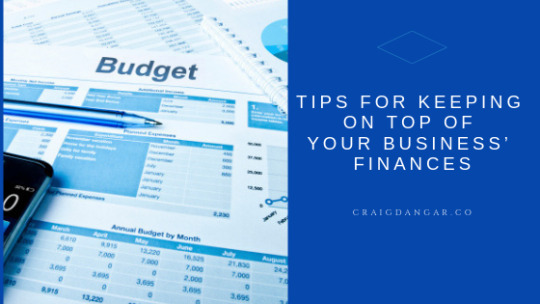Craig Dangar is the Principal Consultant of C&D Restructure and Taxation Advisor. Working in the industry since 1999, he established C&D Commcercial Partners in 2015 as the precursot to his now extremely successful business. Craig brings an excellence into the industry that is not often found. He loves working closely with business owners and his team thrives on strategic leadership and results-driven practices. C&D focuses on finding fixes to difficult financial concepts and helping people better understand their current financial solution for future success. Craig Dangar holds avisory roles in logistics, accounting firms and legal practices, as well as human resources. Craig also holds an impressive amount of degrees - four Bachelor degrees in Arts, Business Taxation and Law. Craig also has a strong educational foundation in with Master degrees in Taxation, Dispute Resolution and Financial Planning. Currently, he is pursuing a Graduate Diploma of Legap Practice. In addition to his success in financial restructuring, Craig Dangar is a prolific writer in the industry with a wealth of knowledge that many seek out. C&D continues to grow, and it has recently expanded into a regular team of five professionals with the ability to expand to as much as ten when circumstances demand. For more on Craig Dangar, visit CraigDangar.com.au.
Don't wanna be here? Send us removal request.
Text
Types of Australian Tax Brackets in 2019

In 2019, the most current updates to the tax rates were put into effect. The following rates apply to residents, non-residents, and individuals designated as a holiday maker in Australia and run through 2020. These are brackets that apply to individuals and do not reflect multiple-party filings. The Australian tax year begins on July 1 and extends to June 30 of the following year.
Residents
If you earn up to $18,000 as a resident, then you are not under obligation for any taxable rate. Once you earn $18,201 you are taxed at a rate of 19% and then a tax payable of 19 cents for each dollar up to $37,000.
At $37,0001 to $90,000, the taxable rate is at 37% and the tax payable of $3,572 plus 32.5% of amounts over $37,000.
At $90,001 -180,000, the rate rises to 37% with the tax payable on this rate of $20,797 plus 37% of amounts over $90,000.
Anyone with an income threshold of $180,000 or more is subject to a 45% tax rate of which the tax payable on this income is $54,096 plus 45% of amounts over $180,000.
Non-Residents
For any non-resident of Australia, any income up to $90,000 will garner a tax payable of 32.5 cents for each $1 earned.
At $90,001 to $180,000 in taxable income, the tax payable is $29,250 in addition to 37 cents for each dollar over $90,000.
Finally, at a taxable income of $180,001 or more, a non-resident will be responsible for a tax payable of $62,550 plus 45 cents for every dollar earned over $180,000.
All of these tax rates, whether they pertain to a resident or non-resident, do not include any surcharges related to the Medicare Levy or the surcharge associated with this levy which has increased to 2 percent. Additionally, some of these amounts can potentially be reduced on a temporary basis through qualifying under the Low and Middle Income Tax Offsets (LMITO) as well as multiple years of tax bracket revisions. These possible reductions are only applicable to residents of Australia.
If you have the status of a holiday maker in Australia, this means you are designated by the government as someone who comes to Australia for a working holiday and are a foreign resident. Typically, this is someone who holds a visa. The government categorises these individuals as either a 417, which is on a working holiday, or a 462, which is work and holiday. The rate of taxable income is the first $37,000 at 15% while the balance of what is made is taxed at the regular rate depending upon what threshold you fall into.
Originally published at craigdangar.co on September 9, 2019.
2 notes
·
View notes
Text
A Look at Capital Gains Tax in Australia

The capital gains tax of Australia is a type of income tax. For this reason, expect to file your investment earnings with your standard tax filing. There are reasonable benefits to get from filing capital gains; there are also ways to reduce how much you pay and when. The first step is to understand what capital gains are and how they’re assessed.
BUYING AND SELLING YOUR ASSETS
Capital gains, as stated without the term “tax,” is what you earn as profit from investments. This is a source of income, but it’s not a source that you labored for. Putting your money into a certificate of deposit (CD), for example, will give you capital gains at the end of the CD’s term. You’ll gain interest as profit on your investment. That interest is taxable.
Purchase Price: The amount you invest in stocks, bonds or business equity is your investment principal. This is the money that you already had and, hopefully, had already taxed as prior income.
Sell Price: After an investment matures, you sell it at a price that differs from the price you bought it at.
The Difference: The outcome of your investment is either gains or losses. What you gain is what’s taxable. Subtract this amount from your initial investment.
WHY FILING IS YOUR BEST OPTION
Below is a look at how you can make the most of capital gains. You should always file to get the best possible tax rate.
Full Rate: Spending your capital gains in under 12 months of earning it will force you to pay a full tax rate on it.
Discounted Rate: Capital gains held over 12 months receive a 50 percent rate reduction when filed.
DON’T FORGET YOUR CAPITAL LOSSES
Just as with your gains, you can cover your losses during tax season. You need proof of your investment transactions, yet with any loss measured out, it can reduce the amount that’s taxed on your gains. Losses act as a deduction, so the full amount you gain for a year won’t be taxed. You can only offset your capital losses on investment gains. Also, losses can’t be deducted on other sources of income.
Originally published at craigdangar.net on September 9, 2019.
0 notes
Text
The Top Five Accounting Software

Accounting is not the first thing on a business owner’s mind when it comes to running a successful company. Many business owners are uncomfortable with the topic. They would rather focus on their company’s products, services or customer experiences. However, technology has made running a business much easier with intuitive business management software, especially accounting. There are many accounting software packages out there, so here are the top five to help you tackle your books.
MYOB (Mind Your Own Business) – This package provides accounting functions for small and medium-sized businesses. It is made for Australia and New Zealand since many Australians work (and visit) New Zealand and vice versa. It works with the Australian Tax Office to ensure business owners are in tax compliance. There are many features of this software that make it a one-stop-shop for accounting needs, including tax and GST (it calculates it for you), bank reconciliation, payments, and payroll. Also, Australians will enjoy getting paid faster since MYOB is a signatory company to the Australian Supplier Payment Code.
QuickBooks – A global corporation, Quickbooks offers many versions of the software (e.g. Australia). It is for the self-employed, small businesses, accountants and bookkeepers. There are four tiers, each offers an array of services to make the lives of business owners much easier. A client can sync to his bank and apps as well as choose cloud-based accounting. It can also handle multi-currency in that you can sell in the customer’s home currency and the software automatically converts it back into your home currency.
Sage – For small, medium and large-sized businesses, this software has only one platform that allows customers to work anywhere with their cloud accounting. Sage offers a number of products based on business size and needs. It goes beyond accounting and helps you manage your entire business, from service management to BOM planning. It offers solutions for a number of industries, such as manufacturing, whole distribution, real estate and non-profit.
Cashflow Manager – This software is for small businesses only. Like those above, it offers a cloud version as well as tech support. It is very intuitive in that the software will calculate the GST, balance your records, create cash flow budgets and more. There are five products from the Cashflow Manager Gold to the Wages 1 – 4. Cashflow Manager also offers manual bookkeeping.
Saasu – Not only does Saasu offer accounting services, but it will also maintain, backup and update the server and web application your file runs on.There are three tiers: small, medium and large with the small tier offering 3 bank feeds. The software has everything you need to run your business efficiently from seeing upcoming payments and tracking inventory to personalising invoices and forecasting cash flow. What sets Saasu apart from the above is its minimalist philosophy, which provides a number of operational benefits for businesses.
These software packages offer the ease and flexibility business owners need to effectively manage their accounts and financials. They all offer secure cloud accounting and the convenience of apps. They are also intuitive, which makes them user-friendly. However, it is best to consult an accountant or tax professional on complex financial situations.
Originally published at craigdangar.net on August 13, 2019.
0 notes
Text
A Look at Corporate Social Responsibility

The words corporate social responsibility (CSR) have garnered a great deal of attention in the past ten years. Social, economic and environmental issues have prompted corporations to do their part to be good citizens of our planet and forced them to be accountable. This strikes at the heart of consumers, which can be the deciding factor on which company to pledge their loyalty. There are many companies that use CSR as one of their core elements in their business models. However, with all the publicity, it is easy to lose sight of what CSR really means.
According to Business News Daily, CSR is an “evolving business practice that incorporates sustainable development into a company’s business model.” CSR can be seen as part of a branding or marketing strategy, which can lessen a company’s efforts. The public is wary about large corporations who have started to focus on CSR. However, the companies that have been implementing CSR into their business models for some time enjoy a healthy customer base. To break down CSR, we need to look at its four pillars.
Environmental Sustainability Initiatives — The focus is on environmental issues, such as reducing pollution and greenhouse gases. For example, Burt’s Bees created the Greater Good Foundation, a non-profit dedicated to improving human and honeybee health.
Donations to Charities and Organisations — The donations are time, money or resources directed toward global causes, such as clean water and human rights. Reynolds supports the United Way of the Capital Region as well as volunteers to build homes for homeless women and children through the Hummel Street Project in Pennsylvania (United States).
Providing Fair Labor Practices – Ensures employees and the employees of vendors have fair working conditions as well as companies source fair-trade products. Starbucks is committed to using fair-trade coffee in partnership with Conservation International.
Economic Responsibility – Focuses on businesses who employ sustainable practices for long-term growth. This is when companies balance their economic decisions and their effects on society. Not only does a company save money on manufacturing by using recycled materials in its products, but it also reduces the amount of trash on our planet. A great example is Parley x Adidas. In collaboration with Parley for the Oceans, Adidas has launched two shoes and apparel that are made with recycled materials. Each sneaker contains plastic from 11 bottles!
CSR has been adopted by many companies over the past twenty years. These practices form consumers’ perceptions, which can increase or decrease a company’s popularity. Overall, CSR is good for corporations since it holds them accountable and helps improve our planet.
Originally published at craigdangar.co on August 13, 2019.
0 notes
Text
Smart Business Apps for Small Businesses

When you are forming your startup, you will need the right tools to keep pace with your larger counterparts. This means using smart business apps. The right ones will help you work efficiently and quickly. There are number of new apps this year, but here are few that stand out:
1. Wave -- This accounting software platform is great for businesses just starting out with just a few employees (e.g. you and your partner). It takes care of tracking sales and expenses, creating and sending invoices, managing payroll, getting paid and deposits and more. All of their products work seamlessly together. There is pricing for some of the products.
2. Fuze -- If you are big on videoconferencing or have remote employees, this app is for you. Fuze is a UC solution with a platform that revolutionizes the way customers and employees connect. It offers a secure platform for voice, collaboration, video and messaging -- all in a single application.
3. RescueTime -- We all need to make better use of our time. And this app will help you do this. It tracks the time you spend on applications and websites. It will send you alerts if you are spending too much time on an activity.
4. Asana -- This is a great app for managing your tasks as well as those of your employees. You can plan your work day, follow your progress on daily tasks and visually map out projects (e.g. risks and deadlines). This visual app will help you stay on target and achieve goals.
5. Pocket -- This app was made for people who don’t have time to read what they have come across on the Internet at that moment. Instead of bookmarking it, you can just save it on Pocket. You can save videos, blogs, articles … etc. from any publication or app. Best of all, you can view the content from any device -- and offline.
6. Streak -- If you need a CRM that integrates with your Gmail, Streak is for you. It captures data from emails and contacts, so you can organize your customers via a timeline (e.g. when you first met a potential customer). You can share your emails, notes and calls with your team, so they can pick up where you left off. Now, nothing gets dropped in the pipeline.
Gone are the days where a small business had to rely solely on one device or suite of programs to get the most out of a work day. Now, small business owners can work anywhere and on any device, using only a handful of apps. And these apps offer free products and/or have affordable pricing.
1 note
·
View note
Text
The History of Taxation in Australia

We know we get taxed, but did you ever wonder when our taxation began? Before Australia was federalised in 1901, the six colonies had their own tax system. The decision to unite the colonies was primarily based on trade. There were tariffs placed on goods that were transported between the colonies. As you can imagine, this created confusion and raised tempers. The first income tax was imposed in 1884 by South Australia, which was a general tax on income. Then, in 1895, New South Wales imposed their own tax.
Right after the federal government was formed, the Australian Taxation Office was created. A two-tier system was created - state and federal. The first federal tax laws began as three tax acts:
1. Bank Notes Tax Act -- Passed by Parliament of Australia, this act imposed a tax on banknotes issued by banks. It was enacted by the Fisher Labour Government, which gave Parliament the power to legislate and tax. It ended private currency in Australia and imposed a 10% tax on the banknotes issued by any bank in the Commonwealth. This was done in response to the Australian Notes Act (1910), where the Australian currency (the Australian pound) was introduced.
2. Land Tax Act -- Created by Fisher Labour Government and regulated by the tax office under the rule of the Commissioner of Land Taxation, the aim of this act was to break up estates secured during colonial times. It was a progressive land tax on the “unimproved” land, and the rate varied whether the land had an absentee or non-absentee landlord. Landowners submitted a valuation of their land, which was often rejected by the tax office.
3. Land Tax Assessment Act -- This act expanded the Land Tax Act by giving definitions of absentee and non-absentee as well as the duties of the Commissioner of Land Taxation.
In 1915, the income tax collected was used to fund Australia’s part in World War I. It is interesting to note that state governments have not imposed income taxes since World War II, when the federal government took over collecting all taxes. Before World War II, income tax was levied at the state and federal levels. This made income tax inequitable across the states. Also, payroll tax was introduced in 1941. As you are aware, there have even more changes to the taxation system, with new taxes introduced in the twentieth century, such as capital gains tax and fringe benefits tax.
1 note
·
View note
Text
High Income Tax Rates Around the World

If you ask anyone which country has the highest taxes, he would say it’s own country. We all must pay taxes; there is no way around it. Taxes are put into place to improve the quality of life of taxpayers as well as to develop and maintain a country’s infrastructure. And there are many types of taxes, from income and capital gains to corporate and property. However, the most important may be personal income tax. While Australia does have a high personal income tax rate, there are other countries with an even higher personal income tax rate.
Top Six Countries with a High Personal Income Tax Rate
Aruba — This paradise comes with a price — an income tax rate of 59%. This rate has remained consistent for the past 8 years. The main source of revenue is tourism, and it is not the tax haven many believe it to be.
Sweden — It requires its citizens to pay 57% of their income in taxes. The taxation system is a combination of income tax and social security contributions by employers. The good news is that the sale of a residential property is tax-free.
Portugal — This nation has enjoyed recent startup growth, particularly in Lisbon. However, it has the second highest income tax rate at 56%. Portugal’s tax system promotes equality between the high and low-income earners, and has a progressive income tax ranging from 14.5% to 48%. Portugal is a great place to retire tax-wise because pension distributions and foreign income aren’t taxed. However, U.S. citizens will still get taxed back home.
Japan — With an economy heavily based on technology, Japan’s income tax rate is 55.95%, and has three tax categories depending on your resident status: resident, non-permanent and non-resident. This small island has the 10th largest population in the world and the fourth largest economy.
Denmark — As a “happy” country, Denmark’s income tax rate is 55.80%. It provides equal access to social programs for all its citizens, which is one of the factors for its high tax rate. Its highest income tax rate reached its peak in 1997 at 65.90% and the lowest in 2010 at 55.40.
Austria — This central European country is home to 9 million people and has a high income tax rate of 55%. The rate has remained the same for the past three years. It also has a high capital gains tax at 25%.
Originally published at craigdangar.net on February 16, 2019.
2 notes
·
View notes
Text
Tips for Keeping on Top of your Business’ Finances

We all want to start our own business. Some have achieved this goal, but the finances have gotten out of hand, resulting in the closing of the business. This doesn’t have to be the case. There are many ways you can stay on top of your business’ finances as well maintain as positive cash flow.
Review your Costs
Many do review their costs, but they do it monthly. You should review your costs weekly. This means all business expenses, from office supplies to business lunches (and coffees).
Make Financial Forecasts
No one likes to do this because they want to focus on the progress their company is achieving right now. Forecasting helps you plan for future obstacles that would prevent you from expanding your business or keeping your business afloat during slow months.
Create a Business Account
It may be very convenient to keep both personal and business spending in one account, but this will set up you for failure. You will have a hard time differentiating personal from business spending and you will create a big tax headache. By creating a business account, you will be able to identify your spending patterns, track your expenses better, and set aside money for taxes.
Give Yourself a Low Salary
Starting business means you get paid last. You will pay the operating costs and bills first. Thus, you should give yourself a low salary (the lowest you can afford) to be able save money now and allocate money for future expenses (i.e. lean months). Keep in mind, this is only a temporary measure until your business produces a profit and becomes sustainable. And when you are determining a salary increase, there are many ways to do this, such as setting it as a percentage of the profits or checking industry salary averages.
Be Frugal
This is another way to save money, especially during the first phase of your startup. It’s also a good habit. When starting out, do not go for an expensive workspace or even furniture. Most startups were started in a garage or bedroom — and stayed there until there was an absolute need for more space. You can also handle your own marketing through social media and by holding events. Utilizing technology is another way to stay frugal. Start using a tablet or laptop for taking notes and storing documents (i.e. cloud). Instead of using handouts, you can create slideshows for meetings. Also, there are many free apps instead of using high-priced software for business services.
Originally published at craigdangar.co on February 16, 2019.
1 note
·
View note